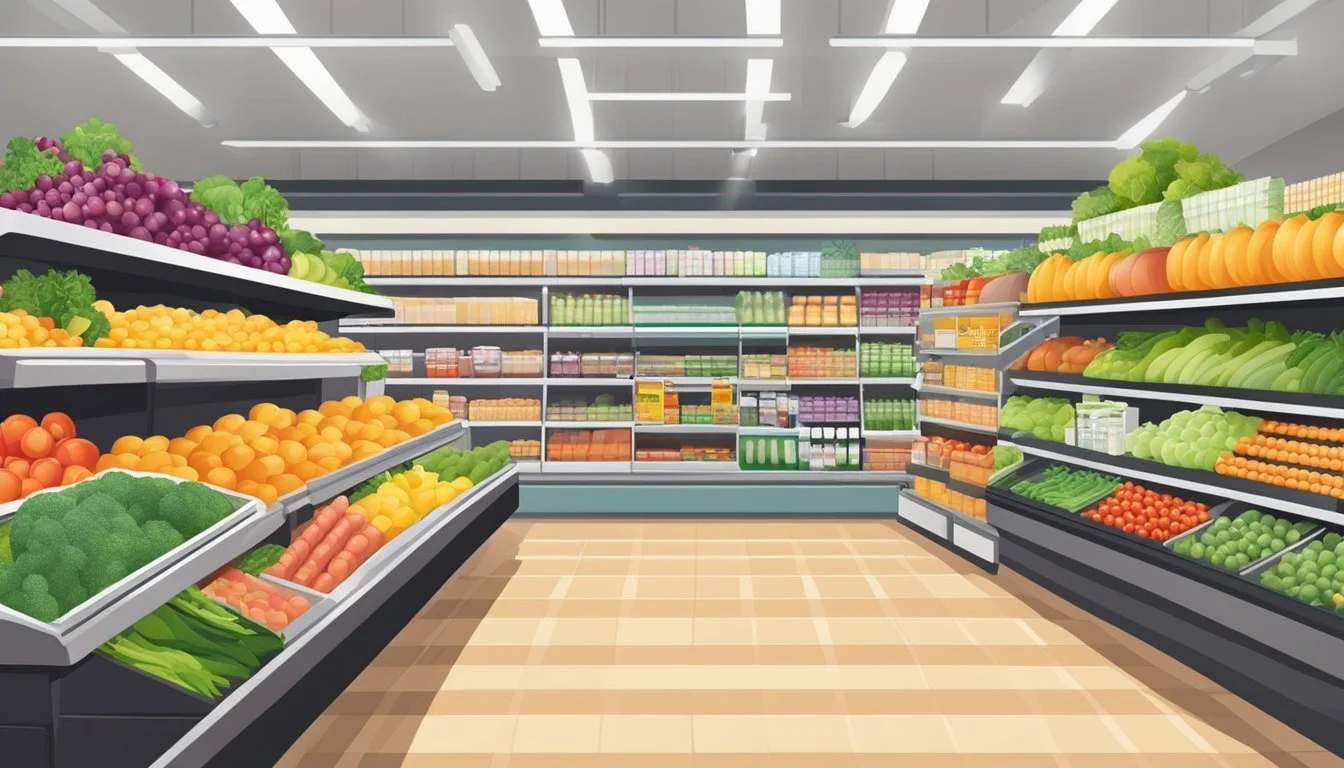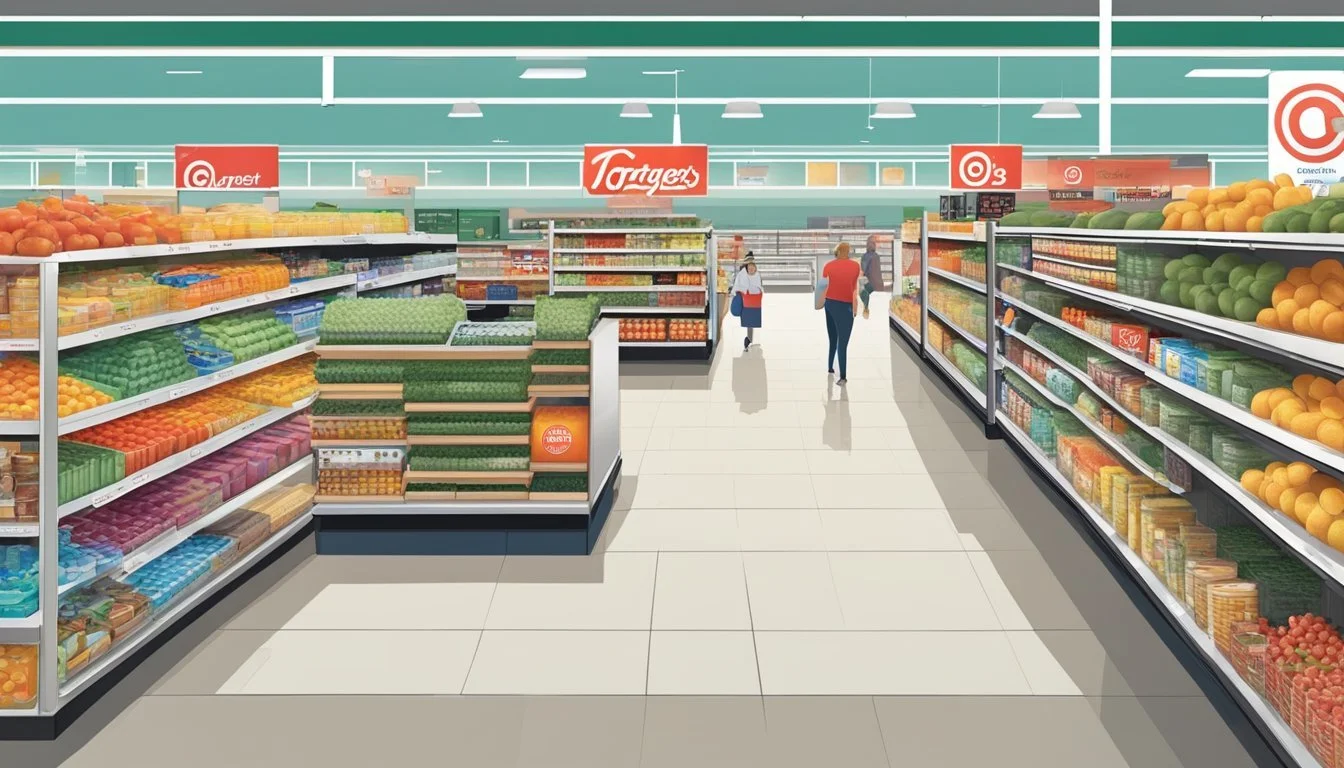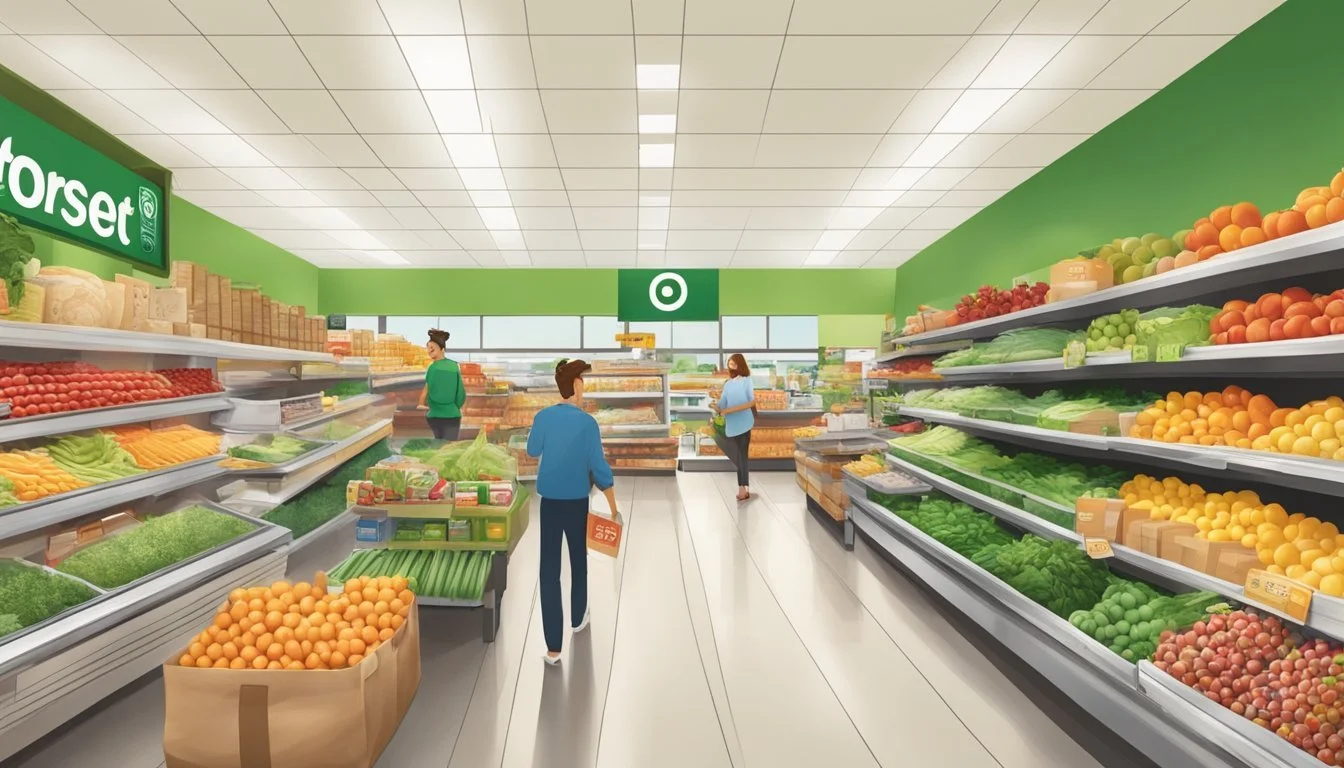Target vs Ralphs
A Comprehensive Comparison of Price, Quality, and Convenience
Target and Ralphs are two popular grocery store chains that offer distinct shopping experiences. Both stores have their strengths and weaknesses when it comes to pricing, product selection, and overall value.
Target generally offers lower prices on many items compared to Ralphs, especially for household goods and non-perishables. However, Ralphs often has better deals on fresh produce and a wider variety of specialty foods. Target's stores tend to be larger and carry more non-grocery items, while Ralphs focuses primarily on food and beverage offerings.
Shoppers looking for convenience may prefer Target's one-stop shopping model, which includes clothing, electronics, and home goods alongside groceries. Those prioritizing fresh ingredients and a traditional supermarket layout may find Ralphs more appealing. The best choice ultimately depends on individual shopping needs and preferences.
Company Backgrounds
Target and Ralphs have distinct histories as retail giants in the United States. Both companies trace their roots back to the late 19th and early 20th centuries, evolving from small family businesses into major national chains.
History of Target
Target Corporation began in 1902 as Goodfellow Dry Goods in Minneapolis, Minnesota. George Dayton founded the company, which later became Dayton's Dry Goods Company and then Dayton Corporation.
In 1938, Dayton Corporation opened its first Target store in Roseville, Minnesota. The store aimed to provide quality products at competitive prices, differentiating itself from traditional department stores.
Target expanded rapidly throughout the 1960s and 1970s. By 1975, Target became the company's top revenue producer. The corporation officially changed its name to Target Corporation in 2000.
Today, Target operates over 1,800 stores across the United States. It has become known for its "expect more, pay less" philosophy and its focus on trendy, affordable merchandise.
History of Ralphs
Ralphs Grocery Company has a rich history dating back to 1873. George Albert Ralphs, a 23-year-old businessman, opened the first Ralphs store in downtown Los Angeles at Sixth and Spring Streets.
The company quickly gained popularity for its quality products and friendly service. Ralphs expanded throughout Southern California in the early 20th century, becoming one of the region's leading grocery chains.
In 1968, Ralphs was acquired by Federated Department Stores. The company changed hands again in 1994 when it was purchased by Fred Meyer, Inc.
Kroger acquired Fred Meyer in 1999, making Ralphs a subsidiary of the largest supermarket chain in the United States. Today, Ralphs operates over 180 stores, primarily in Southern California.
Retail Presence and Accessibility
Target and Ralphs both have significant retail presences, but with distinct approaches to market coverage and store locations. Their strategies impact how accessible and convenient they are for different consumer groups across the country.
National Reach and Local Appeal
Target operates over 1,800 stores across all 50 U.S. states, giving it true nationwide coverage. The retailer focuses on urban and suburban locations, often in shopping centers or standalone big-box stores. Target's recognizable red bullseye logo has become a familiar sight in communities across America.
Ralphs, on the other hand, is a regional supermarket chain primarily concentrated in Southern California. It operates approximately 190 stores, with the vast majority located in the greater Los Angeles area. While more limited geographically, Ralphs has cultivated strong local appeal and brand loyalty among Californian shoppers.
Convenience and Store Locations
Target stores are typically larger format, ranging from 50,000 to 175,000 square feet. These spacious layouts allow for wide aisles and diverse product selections beyond just groceries. Many Target locations feature in-store Starbucks cafes and CVS pharmacies, adding convenience for shoppers.
Ralphs focuses on traditional supermarket formats, with stores averaging around 50,000 square feet. Their locations are often found in neighborhood shopping centers or as standalone stores in residential areas. This allows Ralphs to integrate closely into local communities, providing convenient access for nearby residents.
Both chains prioritize ample parking and easy store access. Target tends to have longer operating hours, with many stores open until 10 PM or later. Ralphs generally closes earlier, typically by 10 PM, though hours can vary by location.
Product Selection
Target and Ralphs offer diverse product ranges to cater to different customer needs. Both stores stock essential groceries, fresh produce, and household items, but their selections vary in key areas. Let's examine how these retailers compare in terms of product quality, specialty offerings, and store-brand options.
Quality of Produce and Meat
Target's produce section typically features a smaller selection compared to Ralphs. While Target carries basic fruits and vegetables, Ralphs often provides a wider variety of fresh produce, including seasonal and locally sourced options. Ralphs generally excels in the quality and freshness of its produce, with many stores offering misting systems to keep vegetables crisp.
In terms of meat, Ralphs usually has a more extensive selection. Their butcher counters offer a range of cuts and often include specialty meats. Target's meat department is more limited, focusing on pre-packaged options. Ralphs frequently receives praise for the quality of its meats, particularly from customers who value freshness and variety.
Organic and Specialty Ranges
Both retailers have expanded their organic offerings in recent years. Target's Good & Gather Organic line provides budget-friendly organic options across various categories. Ralphs, however, typically offers a broader range of organic produce and specialty items.
Ralphs excels in catering to specific dietary needs. They stock a wider selection of gluten-free, vegan, and international products. Target's specialty ranges are more limited but have been growing, particularly in trendy health food categories.
Private Label Offerings
Target's private label game is strong, with brands like Good & Gather, Market Pantry, and Favorite Day covering a wide range of grocery items. These brands often receive positive reviews for their quality-to-price ratio.
Ralphs' parent company, Kroger, has developed several private label brands including Simple Truth, Private Selection, and Kroger brand. These offerings span various price points and quality levels, from budget-friendly basics to premium products.
Target's private labels focus on design and trendiness, often appealing to younger shoppers. Ralphs' store brands tend to emphasize value and quality, catering to a broader customer base.
Pricing and Value for Money
Target and Ralphs employ distinct pricing strategies and offer various ways for customers to save money. Their approaches to everyday pricing, discounts, and loyalty programs can significantly impact shoppers' grocery bills.
Everyday Pricing Strategies
Target aims to provide competitive prices on a wide range of products. The retailer's "Expect More. Pay Less." slogan reflects its commitment to offering value. Target's store brand, Good & Gather, often undercuts national brands on price while maintaining quality.
Ralphs, part of the Kroger family, focuses on a mix of competitive pricing and product variety. Their store brands, like Simple Truth and Private Selection, offer alternatives to pricier national brands. Ralphs' pricing strategy tends to be slightly higher than some discount chains but lower than upscale grocers.
Both stores use dynamic pricing, adjusting costs based on factors like demand and competition. This approach helps them stay competitive in local markets.
Discounts and Loyalty Programs
Target's RedCard offers a 5% discount on most purchases, including groceries. The retailer also runs frequent promotions through its Circle rewards program, providing personalized deals and cashback offers.
Ralphs' loyalty program, Ralphs Rewards, allows customers to earn points on purchases and redeem them for fuel discounts or groceries. The store frequently offers digital coupons and personalized deals through its app.
Both chains provide weekly ad circulars featuring temporary price reductions. Target's "Deal Days" and Ralphs' "Buy 5 Save $5" promotions offer additional savings opportunities for savvy shoppers.
Comparison with Other Chains
When compared to discount chains like Walmart and Aldi, Target and Ralphs typically have higher everyday prices. A study found that a basket of common items at Walmart cost $119.44, while similar items at other chains averaged $126.35.
However, Target and Ralphs offer a broader selection of premium and organic products than many discount stores. Their pricing falls between budget chains and upscale grocers like Whole Foods.
Costco often beats both on bulk item pricing, but requires a membership fee and larger quantity purchases. For weekly grocery shopping, Target and Ralphs provide a balance of price, selection, and convenience that appeals to many consumers.
Customer Experience
Target and Ralphs offer distinct customer experiences, with notable differences in store environment, service quality, and checkout processes. Each retailer has its own strengths and weaknesses that impact the overall shopping experience.
Store Cleanliness and Layout
Target stores typically feature wide aisles, bright lighting, and a clean, organized appearance. The layout is designed for easy navigation, with clear signage and logical product groupings. Many Target locations have undergone recent renovations to enhance the shopping experience.
Ralphs stores vary in their layout and cleanliness depending on location and age. Some newer or recently updated Ralphs feature modern designs and spacious layouts. Older locations may have narrower aisles and less intuitive product placement.
Both retailers generally maintain clean environments, but Target often receives higher marks for consistency across locations.
Customer Service Quality
Target emphasizes customer service training, aiming to provide helpful and friendly assistance. Staff members are usually easy to locate and identify by their red shirts. Target's "Guest Services" desk offers additional support for returns, exchanges, and inquiries.
Ralphs' customer service can vary by location. Some stores have knowledgeable staff who are readily available to assist customers. Others may struggle with staffing levels, resulting in longer wait times for assistance.
Both retailers offer specialized services like pharmacy consultations and deli counter assistance.
Checkout Efficiency
Target has invested in technology to improve checkout efficiency. Many locations offer self-checkout options and mobile payment solutions. During peak hours, Target often opens additional registers to manage customer flow.
Ralphs typically provides both traditional checkout lanes and self-checkout options. The efficiency can vary based on store traffic and staffing levels. Some Ralphs locations have implemented scan-as-you-shop technology to expedite the process.
Wait times at both retailers can increase during busy periods, but Target's larger footprint often allows for more registers to be open simultaneously.
Conveniences and Additional Services
Target and Ralphs offer various conveniences to enhance the shopping experience. Both stores provide delivery options and in-store services to cater to customer needs.
Grocery Delivery Options
Target partners with Shipt for same-day delivery of groceries and household essentials. Customers can place orders through the Target app or website. Delivery is available in most areas, with fees starting at $9.99 per order. Target also offers Drive Up service, allowing customers to place orders online and have them brought to their car for free.
Ralphs provides delivery through Instacart. Customers can order groceries via the Ralphs website or Instacart app. Delivery fees vary based on order size and time slot, typically ranging from $3.99 to $9.99. Ralphs also offers curbside pickup at select locations, where customers can collect their online orders without entering the store.
Additional In-Store Services
Target stores often include Starbucks cafes, CVS pharmacies, and optical centers. Many locations offer mobile phone services and tech support through their electronics department. Target also provides free Wi-Fi for shoppers.
Ralphs offers in-store pharmacies at most locations, with prescription services and immunizations. Many stores have floral departments and Money Services centers for check cashing and money transfers. Ralphs Fuel Centers are available at select locations, allowing customers to earn fuel points on grocery purchases.
Both stores have self-checkout options to speed up the shopping process. Target and Ralphs also offer loyalty programs, providing personalized deals and discounts to members.
Sustainability and Ethical Practices
Target and Ralphs have distinct approaches to sustainability and ethical practices. Their strategies encompass sourcing policies, environmental initiatives, and community engagement efforts.
Sourcing and Environmental Impact
Target has committed to offering more organic and sustainably sourced products. The retailer aims to make 100% of its owned brand products designed for circularity by 2040. Target also focuses on reducing plastic waste, with plans to eliminate plastic bags from all stores by 2025.
Ralphs, as part of the Kroger family, emphasizes sustainable seafood sourcing. The company has pledged to source 100% of its wild-caught seafood from fisheries that are Marine Stewardship Council (MSC) certified or in Fishery Improvement Projects. Ralphs also works to reduce food waste through composting programs and donations to food banks.
Both retailers have implemented energy-efficient lighting and refrigeration systems in their stores to reduce their carbon footprint.
Community Involvement and Initiatives
Target's community initiatives include its Target Circle program, which allows customers to direct the company's giving to local nonprofits. The retailer also partners with organizations to support education and disaster relief efforts.
Ralphs focuses on fighting hunger through its Zero Hunger | Zero Waste initiative. The company donates millions of meals annually to local food banks and community organizations. Ralphs also supports breast cancer research through its Sharing Courage campaign.
Both retailers offer in-store recycling programs for plastic bags and other materials, encouraging customers to participate in sustainability efforts.
Financial Performance and Market Position
Target and Ralphs have distinct financial profiles and market positions in the grocery retail sector. Their revenue streams, growth trajectories, and market shares reflect their different business models and target demographics.
Annual Revenue and Growth
Target reported annual revenue of $106.5 billion in fiscal year 2022, marking a 2.8% increase from the previous year. The company's grocery segment contributes approximately 20% to its total sales.
Ralphs, as a subsidiary of Kroger, does not report individual financial results. However, Kroger's total revenue reached $137.9 billion in fiscal year 2022, growing by 7.5% compared to the prior year.
Target's growth strategy focuses on omnichannel expansion and store remodels. Ralphs benefits from Kroger's investments in digital platforms and private label brands.
Market Share Comparison
Target holds a 2.5% share of the U.S. grocery market, positioning itself as a significant player in the retail landscape. The company's market share has grown steadily due to its expanded grocery offerings and convenient store formats.
Ralphs, under Kroger's umbrella, contributes to Kroger's 8.7% market share, making it the second-largest grocer in the United States. Kroger's extensive network of regional chains, including Ralphs, strengthens its competitive position.
Target's market presence is bolstered by its diverse product mix and strong brand recognition. Ralphs leverages Kroger's scale and supply chain efficiencies to maintain its market share in key regions.









